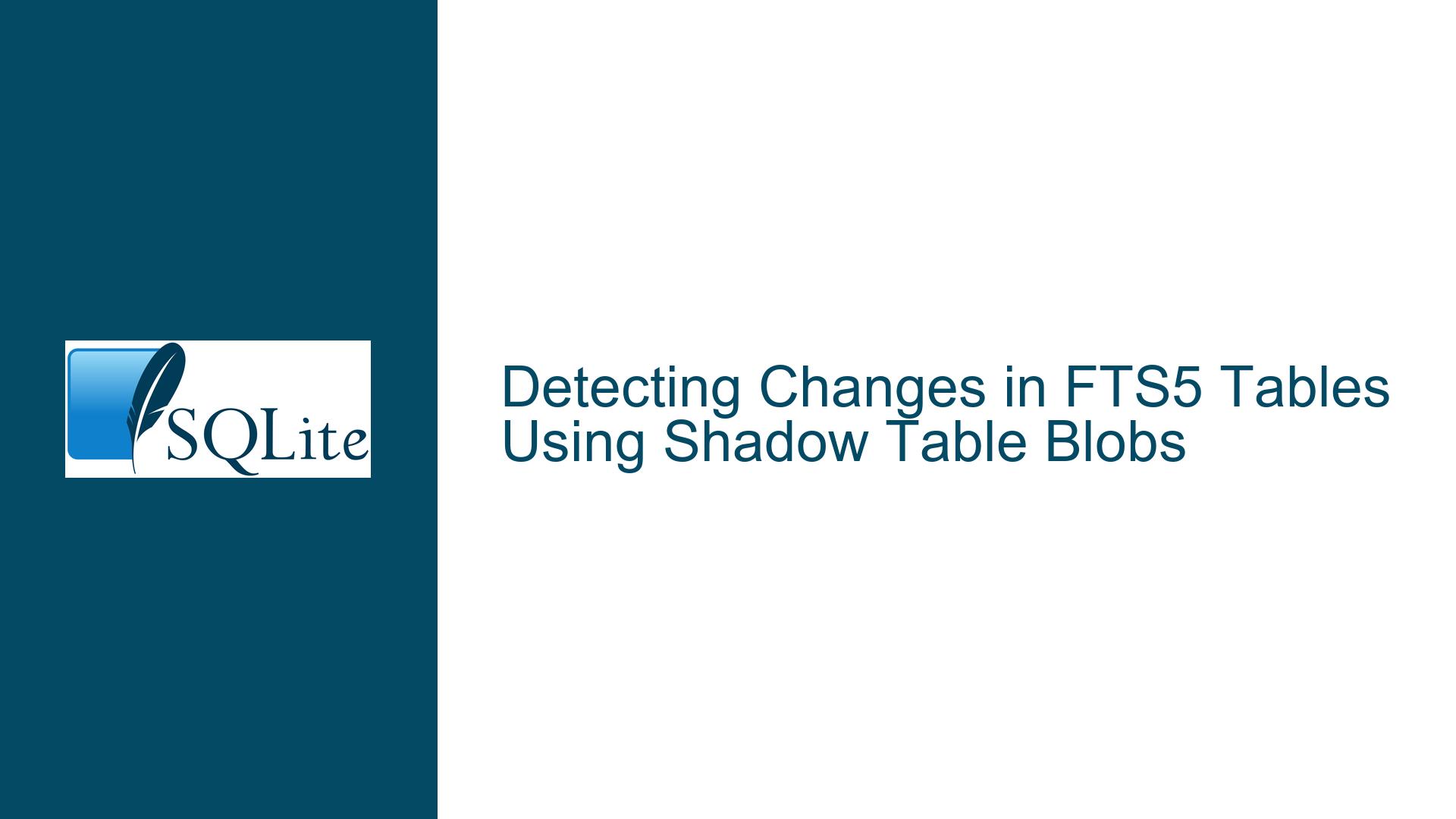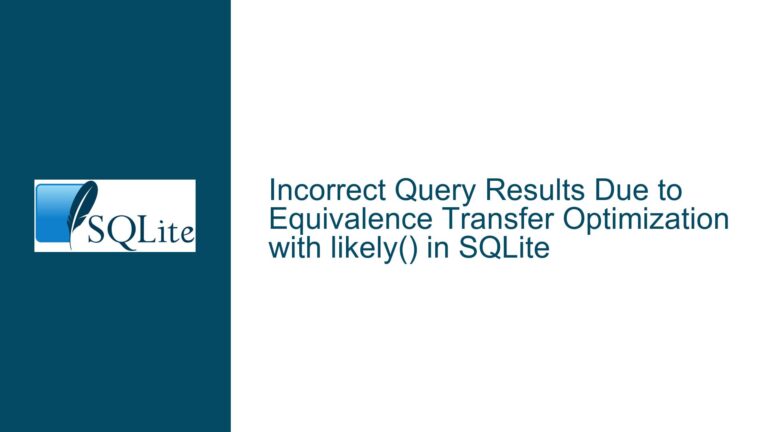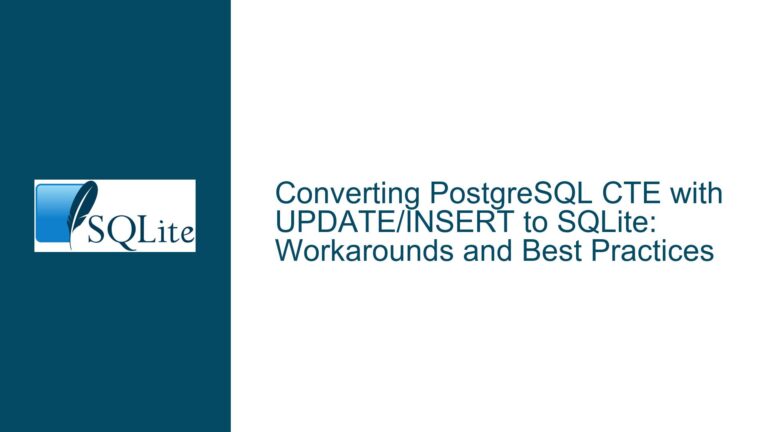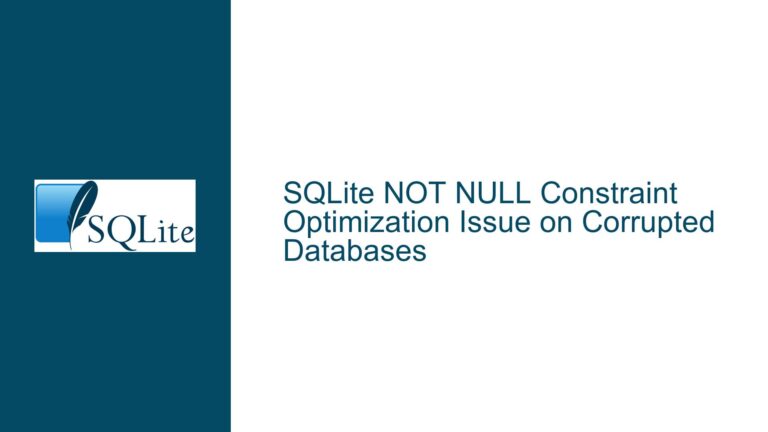Detecting Changes in FTS5 Tables Using Shadow Table Blobs
Understanding the Need for Detecting FTS5 Table Changes
In the context of SQLite, Full-Text Search version 5 (FTS5) is a powerful extension that enables efficient text-based search capabilities. However, managing and maintaining caches or external data structures that depend on the state of an FTS5 table can be challenging, especially when the table is modified by external processes or triggers. The core issue revolves around detecting whether an FTS5 table has changed, so that dependent caches or data structures can be updated or invalidated accordingly.
The challenge is compounded by the fact that FTS5 tables can be modified directly through SQL statements, indirectly through triggers, or even through contentless configurations where the FTS5 table does not store its own content but references an external table. This makes it difficult to rely solely on traditional methods like tracking row counts or timestamps, as these may not capture all changes or may introduce false positives.
The goal is to find a reliable and efficient way to detect changes in an FTS5 table, particularly by leveraging the internal shadow tables that FTS5 maintains. These shadow tables store metadata and auxiliary data structures that are updated whenever the FTS5 table is modified. By examining specific blobs within these shadow tables, it is possible to determine whether the FTS5 table has changed without needing to scan the entire table or rely on external triggers.
Exploring the Role of Shadow Table Blobs in Change Detection
FTS5 maintains several shadow tables to support its functionality, including the %_data table, which stores various blobs used for indexing and metadata. Among these blobs, two are particularly relevant for change detection: the "special structure" blob and the "averages" blob. These blobs are updated during operations like inserts, deletes, and updates, making them potential candidates for detecting changes.
The "special structure" blob, identified by id=10 in the %_data table, contains metadata about the FTS5 index, including a 32-bit cookie value at the start of the blob. This cookie value is incremented every time the blob is written, which occurs whenever data is committed to the FTS5 table. This makes the cookie value a reliable indicator of changes, as it is guaranteed to be updated whenever the FTS5 table is modified.
The "averages" blob, identified by id=1 in the %_data table, stores statistical information about the distribution of terms in the FTS5 index. While this blob is also updated during modifications, it is less reliable for change detection because certain types of updates (e.g., replacing one word with another) may not alter the averages significantly. Additionally, the size of the averages blob can vary based on the number of columns in the FTS5 table, which may introduce inefficiencies when reading large blobs.
The documentation for FTS5 initially contained inconsistencies regarding the IDs of these blobs, but it has since been clarified that the special structure blob is identified by id=10 and the averages blob by id=1. This clarification is crucial for implementing a robust change detection mechanism.
Implementing a Robust Change Detection Mechanism Using Special Structure Blobs
To implement a reliable and efficient change detection mechanism for FTS5 tables, the following steps can be taken:
Query the Special Structure Blob: The first step is to query the
%_datatable for the special structure blob withid=10. This can be done using a simple SQL query:SELECT value FROM fts5_table_data WHERE id = 10;Here,
fts5_table_datais the name of the%_datashadow table corresponding to the FTS5 table being monitored.Extract the Cookie Value: The special structure blob begins with a 32-bit cookie value, which is incremented every time the blob is written. By extracting and storing this cookie value, it is possible to detect changes by comparing the current value with the previously stored value. If the values differ, the FTS5 table has been modified.
Optimize Blob Reading: To minimize the overhead of reading large blobs, only the first 4 bytes of the special structure blob need to be read. This can be achieved using SQLite’s
substrfunction:SELECT substr(value, 1, 4) FROM fts5_table_data WHERE id = 10;This ensures that the change detection mechanism remains efficient, even for large FTS5 tables.
Handle Edge Cases: While the special structure blob is a reliable indicator of changes, it is important to handle edge cases where the blob may not be updated as expected. For example, if the FTS5 table is optimized or rebuilt, the special structure blob may be rewritten without changing the cookie value. In such cases, additional checks may be necessary, such as comparing the size or checksum of the blob.
Integrate with Cache Management: Once a change is detected, the cached data or external data structures dependent on the FTS5 table should be updated or invalidated. This can be done by triggering a cache refresh or by marking the cache as stale and updating it lazily when the data is next accessed.
By following these steps, it is possible to implement a robust and efficient change detection mechanism for FTS5 tables using the special structure blob. This approach leverages the internal metadata maintained by FTS5, ensuring that changes are detected accurately and with minimal overhead. Additionally, it avoids the need for external triggers or complex monitoring mechanisms, making it a practical solution for libraries and applications that rely on FTS5 for text-based search functionality.






